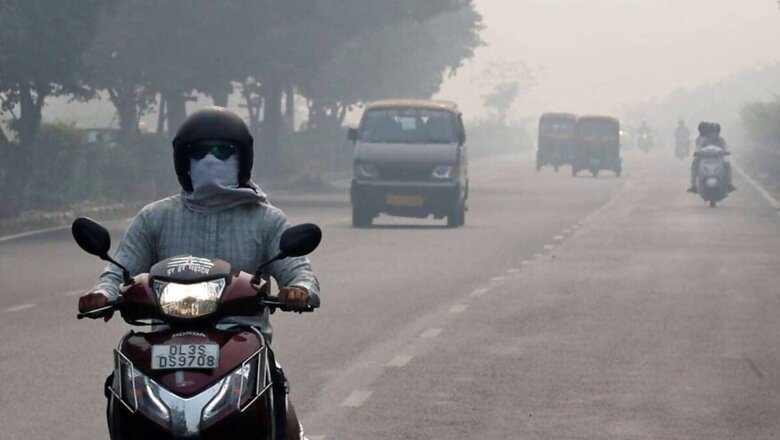
views
The national capital's air quality was recorded in the "poor" category on Sunday, with a central government agency reporting 1,230 farm fires in neighbouring states the maximum in a day so far this season.
The share of stubble burning in Delhi's PM2.5 pollution stood at 17 per cent. It was 19 per cent on Saturday, 18 per cent on Friday, around one per cent on Wednesday and around 3 per cent on Tuesday, Monday and Sunday.
The city recorded a 24-hour average air quality index (AQI) of 254. It was 287 on Saturday, 239 on Friday and 315 on Thursday, the worst since February 12 (AQI 320). An AQI between 0 and 50 is considered 'good', 51 and 100 'satisfactory', 101 and 200 'moderate', 201 and 300 'poor', 301 and 400 'very poor', and 401 and 500 'severe'.
During the daytime, winds are blowing from the northwest, bringing pollutants from farm fires. At night, calm winds and low temperatures are allowing the accumulation of pollutants, according to an India Meteorological Department official. According to the Ministry of Earth Sciences' air quality monitor, SAFAR, the farm fire count around Haryana, Punjab, and neighbouring border regions was 1,230 on Saturday, the maximum in a day so far this season.
The share of farm fires in Delhi's PM2.5 concentration stood at 17 per cent. "Though fire emission has increased and transport-level wind direction is also favourable, an increase in transport-level wind speed as well as local surface winds in Delhi are likely to keep the stubble contribution in Delhi's PM2.5 around the same level," it said.
The Ministry of Earth Sciences' Air Quality Early Warning System for Delhi said the ventilation index, a product of mixing depth and average wind speed, was 11,500 metre square per second on Sunday which is favourable for the dispersion of pollutants. Mixing depth is the vertical height in which pollutants are suspended in the air. It reduces on cold days with calm wind speed.
A ventilation index lower than 6,000 sqm/second, with an average wind speed of less than 10 kmph, is unfavourable for the dispersal of pollutants. The Ministry of Earth Sciences' Air Quality Early Warning System for Delhi said the impact of stubble burning is "restricted because of better mixing height and ventilation", but it is likely to rise by Monday.
Earlier in the day, Union Environment Minister Prakash Javadekar said the pollution problem cannot be resolved in a day and continuous efforts are needed to tackle each of the contributing factors. Interacting with people during a Facebook Live event, he said the major factors behind air pollution in the country are traffic, industries, waste, dust, stubble, geography and meteorology.
The Central Pollution Control Board (CPCB) has said meteorological conditions in Delhi have been "extremely unfavourable" for the dispersion of pollutants since September as compared to last year. With less area under non-basmati paddy cultivation this time, CPCB Member Secretary Prashant Gargava hoped there will be fewer stubble burning incidents this year as compared to 2019.
Non-basmati paddy straw is considered useless as fodder because of its high silica content and so farmers burn it. Gargava also said stubble burning peak might not coincide with the peak of adverse meteorological conditions this year due to the early harvesting of paddy.
Read all the Latest News and Breaking News here



















Comments
0 comment